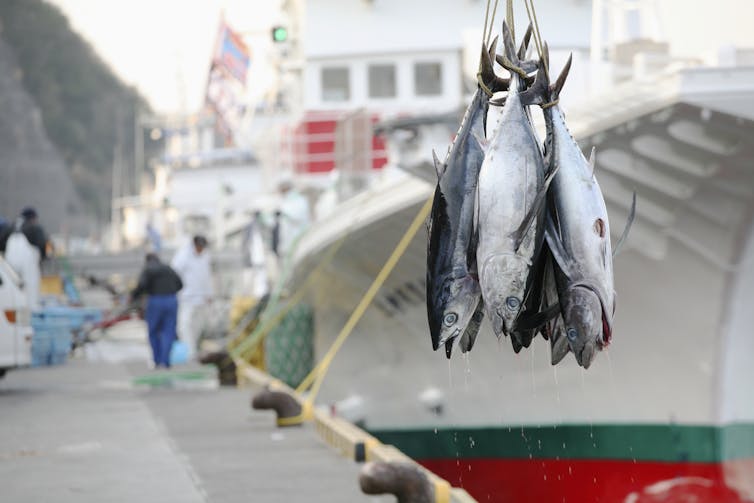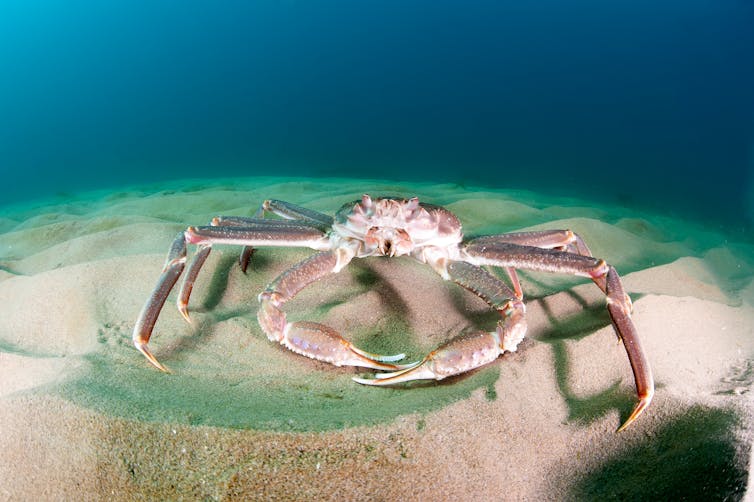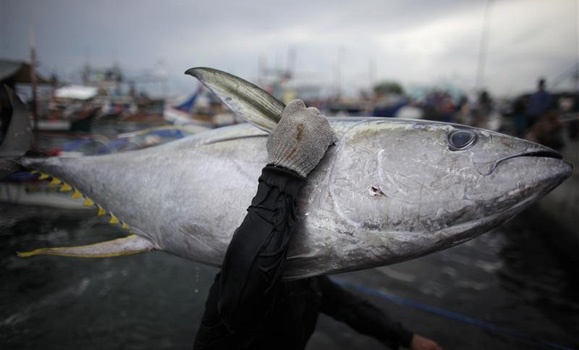Author is a Postdoctoral Fellow with the Marine Affairs Program and the Ocean Frontier Institute at ะยผำฦยม๙บฯฒสฟชฝฑึฑฒฅ.
The worldโs fish stocks are in decline and our increasing demand for seafood may be one of the main drivers. But the true extent of the problem is hard to estimate, especially when fishing occurs in the high seas, which lie beyond national jurisdiction and are hard to monitor.
Conservation planners face growing pressures to combat illegal, unregulated and unreported (IUU) fishing, the value of which has been estimated at annually. This is an important cost for society as a whole, but also for .
Artificial intelligence (AI) could address this global environmental concern โ and satisfy the need of seafood retailers and consumers to know if what theyโre selling and eating is sustainable. Social scientists are beginning to think of ways that can bring AI, ecology and economics together โ to design policies that target socially desirable outcomes such as preserving biodiversity values and returning the benefits of fishing to society.
At a February meeting of HUMAINT, a European Commission-led initiative on human behaviour and machine intelligence, I discussed the ways AI can be used to help marine resource management.
Poached fish
Fisheries and conservation managers have put a lot of effort in recent years in establishing spatial management tools such as marine protected areas to help fish stocks recover from past over-exploitation. Fish biomass in no-take marine reserves can be .
Even though they are protected, these areas are not always immune to IUU fishing. Poaching occurs and cannot be tracked easily. This can make it difficult to evaluate the effectiveness of the protected area in a rigorous scientific manner.

IUU fishing results in โ namely declining fish stocks โ and can lead to a loss of profit for those fishers who play by the rules. It can turn the industry against the regulatory authorities that impose these spatial restrictions, undermine public trust in fisheries management and conservation science.
Tracking fishing with AI
Traditionally, observers have been employed, at high cost, to monitor fishing activity on board vessels. But in remote locations, such as the Arctic, it can be difficult to find observers.
AI tools have the potential to lower monitoring and operational fishing costs and improve efficiency in fisheries management. Examples include automatic review of video footage, monitoring vessel sailing patterns for IUU fishing and illegal at-sea transshipments (moving goods from one ship to another), compliance with catch limits and bycatch or discard regulations, and improving assessment of fish stocks.
AI tools can also help build trust among fishers, scientists and society through .

Image recognition using AI can help identify the size of a vessel and its activity. It can help conservation managers understand who fishes for what in international waters where . It may also contribute to a better understanding of how commercially fished invasive species are spreading.
Read more:
However, there are also potential risks. Some fear the data may be used for unintended purposes or that AI tools might replace manually performed tasks and , a big concern for small, coastal fishery-dependent communities.
The way forward
The , an independent organization that emerged through a collaboration between Google, SkyTruth (a digital mapping non-profit organization) and Oceana, is an excellent example of how combining AI and satellite data can change our understanding of global fishing activity.
Global Fishing Watch shows vessel movement in near real-time. goes beyond tracking vessel activity: the neural network (computer program) it uses can identify vessel size and engine power, the type of fishing being done and the gear used. The ambitious project goes as far as tracking , a well-known phenomenon in the fishing industry.

The developments in AI applications have been impressive in recent years, allowing for a better understanding of fishing activity across the globe. Further progress in making them more widely applicable has been limited partly by the costs involved for the industry. Concerns about the impact of digital surveillance on privacy interests are also an issue.
Despite all the progress in AI science and the development of advanced algorithms that improve the quality and speed of information transmitted for ongoing fishing activities at sea, there is still very little formalized integration of science, regulatory authorities and the fishing industry.
Making the best use of what AI tools have to offer requires experts to transcend their disciplinary boundaries and actively collaborate โ so they can provide value to ongoing management efforts to conserve biodiversity and build trust among seafood consumers.![]()
which features includes relevant and informed articles written by researchers and academics in their areas of expertise and edited by experienced journalists.
ะยผำฦยม๙บฯฒสฟชฝฑึฑฒฅ is a founding partner of The Conversation Canada, an online media outlet providing independent, high-quality explanatory journalism. Originally established in Australia in 2011, it has had more than 85 commissioning editors and 30,000-plus academics register as contributors. A full list of articles written by ะยผำฦยม๙บฯฒสฟชฝฑึฑฒฅ academics can be found onย .

